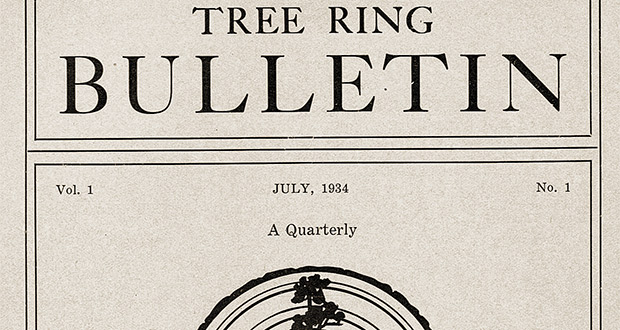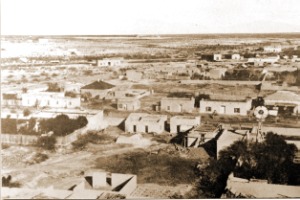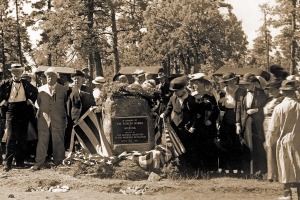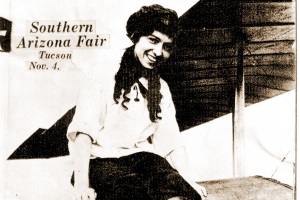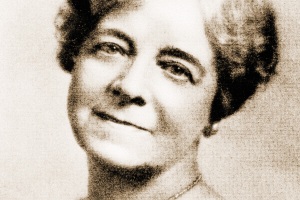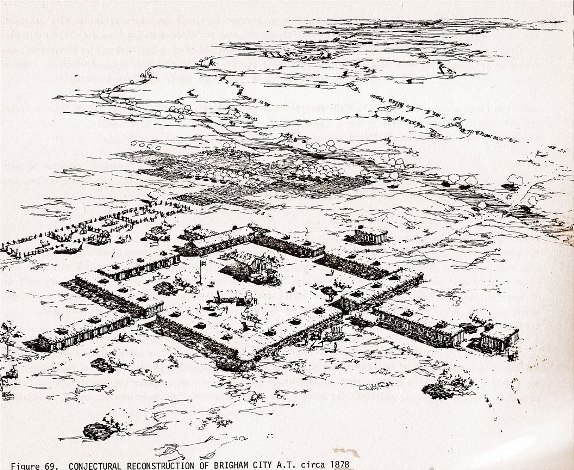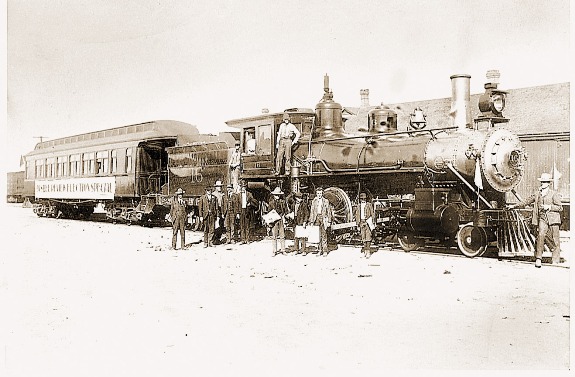Rifleys — Father and Son
This photo, showing father and son in boxing gloves, was taken in Phoenix about 1922. It reflects Jack Dempsey’s dynamic effect on American culture. A comparatively small man, Dempsey electrified the nation in 1919 by winning the heavyweight championship, knocking out the gigantic Jess Willard in just three roundsc — an event that launched America’s Golden Age of Sports.
Santa Cruz County Pioneers
In 1910, Esther Rothrock, who lived in Elgin, a town southeast of Sonoita in Santa Cruz County, invited her sisters, Carrie and Rhoda Swigart, to come to Arizona to homestead land.
Flagstaff’s Tree-Ring Study Pioneers
Within the small scientific circle in Flagstaff in the 1920s were three men who combined their expertise to develop the science known today as dendrochronology, or tree-ring dating: astronomer Dr. Andrew E. Douglass (1867-1962); forester Gustaf A. Pearson (1880 -1949) and zoologist Dr. Harold S. Colton (1889-1970). Each man would become well-known and respected for this project and other scientif[...]
Fort Grant
In 1885, when Geronimo and the Chiricahua Apaches were raiding in southern Arizona, the 10th Cavalry was transferred from Texas to Forts Grant, Thomas, Apache and Verde in the Arizona Territory. (The 10th was one of the cavalry regiments organized with black troops after the Civil War. Indians called the men Buffalo Soldiers after their short curly hair.) The men of the 10th sent to Fort Grant h[...]
Transitioning Tucson
Looking northeast toward the barely visible Santa Catalina Mountains is Tucson in the early 1880s. The photograph, probably taken from the lower steps of Sentinel Peak, shows an evolving Tucson.
Flagstaff Celebrates Pioneer Women and Good Roads
On July 14, 1915, the Arizona Society of the Daughters of the American Revolution (ASDAR) dedicated a plaque at Walnut Canyon near Flagstaff honoring pioneer women. The event was held in conjunction with the National Old Trails Road Association meetings in Flagstaff.
The Flying Schoolgirl
Katherine Stinson was born Feb. 14, 1896, in Jackson, Miss. As a young woman, she hoped to become a piano teacher and planned to study music in Europe, but lacked the money for the trip. For some reason, she fixed on becoming a stunt pilot as a quick way to earn cash. However, to pay the $500 cost of flying lessons, her family had to sell the piano. That might have been a hardship for Stinson, [...]
Bisbee Pioneers at the Norton House
On May 21, 1906, this group of Bisbee residents gathered in front of the Norton House hotel on Main Street for a commemorative photograph. With the exception of the children, all the residents had arrived in Bisbee in the 1800s, and were friends and acquaintances of E.G. Norton, who owned the Norton House and was leaving Bisbee to retire in Maine.
Annie Evalena Stakebake Seayrs Daniels
Annie Evalena Stakebake Seayrs Daniels, a schoolteacher and Pima County superintendent of schools, was born in a log cabin on a farm near Windsor, Randolph County, Ind., on Oct. 3, 1869. Her parents were Henry Harrison and Louisa Cropper Stakebake.
The Valenzuelas of Phoenix
On Sept. 15, 1918, a young soldier, who expected momentarily to be sent overseas to fight the Germans, had himself photographed at Camp (now Fort) Dix, New Jersey, and sent the result on a postcard addressed to Rosa Gold of Phoenix.
Early LDS settlements in Arizona Territory
Hearty members of the Church of Jesus Christ of Latter day Saints (LDS) were summoned to leave their Utah homes and settle in Arizona Territory beginning in the 1860s as LDS President Brigham Young was concerned with westward-bound wagon trains filled with non-LDS settlers wanting to move into the wide open west.
The ‘Bisbee Review’ Train
Shortly after midnight on Nov. 9, the Bisbee Review train pushed into the local station. Using results supplied by The Associated Press, the newspaper began to print its election special sections on two presses that ran until 3:45 a.m., as fast as possible. As soon as the election sections were printed, they were hauled off to the train.



